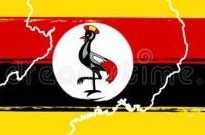List Of Ethnic Groups In Uganda
A group of people who share a similar culture (beliefs, values, and behaviors), language, religion, ancestry, or other characteristic that is often handed down from one generation to the next. They may come from the same country or live together in the same area.
Find Below are the List Of Ethnic Groups In Uganda
Ethnic Groups in Uganda and worldwide are defined as a group of people who share a common heritage, language or cultural background. In Uganda, different ethnic groups are believed to have migrated from different origins and then settled in different locations around the country and also in the neighboring countries.
Ethnic groups in Uganda include the Bantu, the Nilotics, the Nilo Hamites and the Hamites. The largest ethnic group in Uganda is the Bantu with the Baganda taking up a high percentage of the Bantu group.
1. The Bantu: The Bantu are believed to have originated from the south western parts of Africa and they migrated to the southern, eastern and central parts of Africa. This ethnic group of people introduced iron smelting, barkcloth and cultivating using efficient tools made from ironworks and stones.
Crops grown by the Bantu include millet, sorghum, rice, beans, and many others. The iron tools were also used to defend themselves during conflicts with neighbors.
The tribes who are part of the Bantu include the Baganda, Banyankole, Basoga, Bakiga, Batoro, Banyoro, Bagisu, Bagwere, Bafumbira, Basamia and the Bakonjo. This ethnic group of people speaks related languages with the suffix “Ntu”.
The baganda are a group of Bantu speaking people who live in central Uganda in locations such as Kampala, Mpigi, Mukono, Kalangala, Masaka, Mubende and many other districts. The Buganda culture is among the surviving cultures in Uganda which have maintained traditional practices and have a kingdom. The staple food for the Baganda is “matooke” which consists of bananas wrapped in banana leaves.
Banyankole also belongs to the Bantu speaking group of people who live in the south western part of Uganda. They are known for cattle keeping and for rearing long-horned cattle. Districts, where these people can be found, include Mbarara, Bushenyi, Ntungamo among others.
Basoga are a group of Bantu who lives in eastern Uganda in districts such as Jinja, Iganga and Kamuli.
2. Nilotic people
The Nilotes are believed to have originated from Rumbek in South Sudan and settled around northern Uganda while other nilotics moved northwards to Shiluk and to the eastern direction towards Ethiopia. The ones who settled in Uganda moved along the Nile and settled in Pubungu.
Due to conflicts, the Nilotic group that settled in Pubungu divided into two groups which is explained in different stories such as the story of Gipir and Labongo. The group which followed Gipir crossed the Nile and settled in the land of the Okebu and Lendu who intermarried and this formed the Alur.
Labongo’s group moved in the northeastern direction from Pubungu and to where the Acholi are currently settled.
The Nilotic people live in the northern part of Uganda and the tribes in this ethnic group include the Langi, Acholi, Alur, Padhola, Lulya and the Jonam. They are also known as the Luo people of Uganda. This ethnic group is divided into plain nilotes, river lake Nilotes and highland nilotes.
Acholi are a group of Nilotics who live in the northern part of Uganda and they live in districts which include Gulu and Kitgum.
Alur are a group of people who live in the northwestern part of Lake Albert in districts such as Nebbi, Zombo and many others. The Alur can also be found in the Democratic Republic of Congo.
3. Nilo Hamites
The origin of the Nilo Hamites is said to be the northeastern part of Ethiopia and they migrated to areas of Karamoja and then others settled and moved southwards to other areas around.
Nilohamites include Teso, Karamojong, Kumam, Kakwa, Sebei, Pokot, Labwor and the Tepeth, Lugbara, Madi and the Lendu. This group of people can be seen in the eastern part of Uganda and they possess more Hamite characteristics than Nilotic characteristics. The bahima are part of the ethnic group of the Hamites.
The different ethnic groups in Uganda have unique cultures that differ in terms of the way of dressing, traditions and norms, food preparation, naming, ceremonies, initiation rites, traditional dances, marriage ceremonies and many other aspects of culture.
What are the 4 main ethnic groups in Uganda?
The largest Nilotic populations in present-day Uganda are the Iteso and Karamojong cluster of ethnic groups, speaking Eastern Nilotic languages, and the Acholi, Langi, and Alur, speaking Western Nilotic languages.
What is the ethnic breakdown of Uganda?
Uganda Demographics
The main ethnic group is called the Ganda, which makes up 16.9% of the population, followed by the Nkole, Soga and Kiga tribes, which make up 9.5%, 8.4% and 6.9% respectively. There are many other tribes; however, they constitute a very small percentage of the total population.
